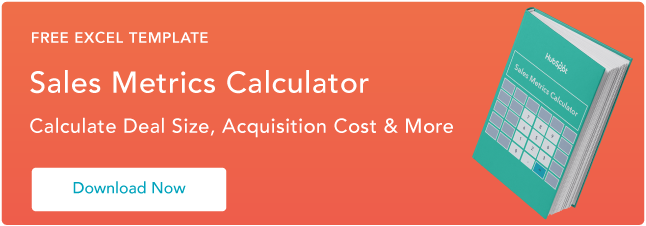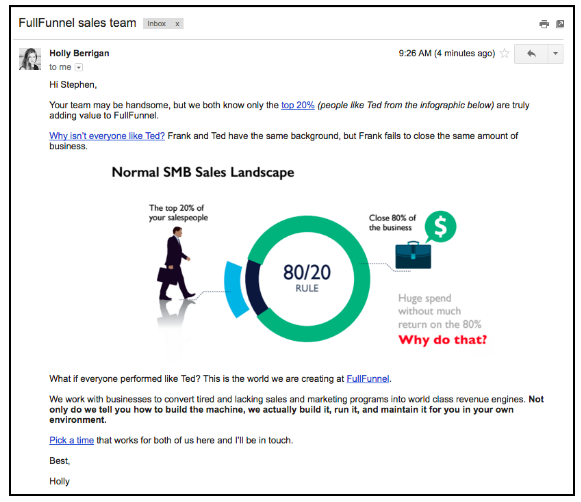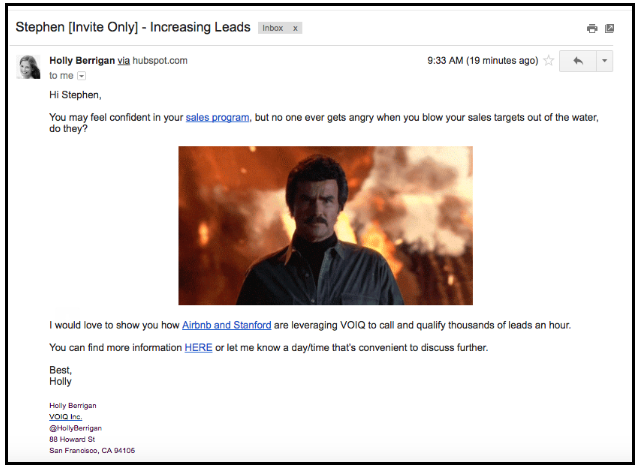Imagine working for a company without any employees dedicated to growing and developing the business.
Nobody to challenge you to improve or tell you about new business opportunities, changes in the market, what your competition is up to, or how you can attract your target audience more effectively.
This would make it pretty hard to succeed, don’t you think?
That’s why companies establish business development practices and hire employees to focus on these tasks (among others) to help them grow.
It involves pursuing opportunities to help your business grow, identifying new prospects, and converting more leads into customers. Business development is closely tied to sales — business development teams and representatives are almost always a part of the greater sales org.

Although business development is closely related to sales, it’s important to note what makes them different.
Business Development vs. Sales
As mentioned, business development lives on the greater sales team yet it serves a different function than typical sales work and responsibilities.
Business development is a process that helps your company establish and maintain relationships with prospects, learn about your buyer’s personas, increase brand awareness, and seek new opportunities to promote growth.
In contrast, sales teams sell your product or service to customers and work to convert leads into customers. Business development-related work simplifies the work of a salesperson or sales manager.
Let’s take a closer look at what business development representatives — the people responsible for carrying out the various business development tasks — do next.
Possessing the necessary business development skills and experience will help your BDRs achieve all of their day-to-day tasks and responsibilities.
Business Development Representative Responsibilities
Although some BDR responsibilities may change over time and as your business grows, the following list will provide you with a solid understanding of typical BDR tasks.
1. Qualify leads.
BDRs must qualify leads and pinpoint ideal prospects to determine who they'll sell to. Typically, leads are qualified through calls, emails, web forms, and social media.
The key to qualifying leads (leads who are assigned to the BDRs as well as leads BDRs identify themselves) is to consider their needs and then determine whether or not your product or software could be a solution for them.
2. Identify and communicate with prospects.
By qualifying leads and searching for people who fit your buyer personas, BDRs will identify ideal prospects. They can communicate with those prospects directly to learn more about their needs and pain points.
This way, BDRs can determine whether or not the prospect will really benefit from your product or service by becoming a customer. This is important because it increases the potential of improved customer loyalty and retention.
Once the BDRs have identified ideal prospects, those prospects can be passed along to a sales rep on the team (or sales manager, if necessary) who can nurture them into making a deal.
3. Proactively seek new business opportunities.
Proactively seeking new opportunities — whether that’s in terms of the product line, markets, prospects, or brand awareness — is an important part of your business’s success. BDRs work to find new business opportunities through networking, researching your competition, and talking to prospects and current customers.
If a new business opportunity is identified, BDRs should schedule marketing assessments and discovery meetings with the sales reps on the team so they can all assess whether or not there’s potential for a deal.
4. Stay up-to-date on competition and new market trends.
It’s important to stay up-to-date on your competition’s strategies, products, and target audience as well as any new market and industry trends.
This will allow you to more effectively identify ideal prospects. It also helps your business prepare for any shifts in the market that could lead to the need for a new approach to qualifying leads and attracting your target audience.
5. Report to salespeople and development managers.
As we reviewed, at most companies, BDRs report to sales reps and sales managers. BDRS must communicate with these higher-ups for multiple reasons such as discussing lead qualification strategies and how to get prospects in touch with sales reps to nurture them into customers.
BDRs also have to report their findings (such as business opportunities and market trends) to sales reps and managers. Relaying this information and collaborating with sales reps and managers to develop and/or update appropriate strategies for your business and audience is critical to your success as an organization.
6. Promote satisfaction and loyalty.
A BDR's interaction with a prospect might be the very first interaction that prospect ever has with your business. So, creating a great first impression right off the bat is crucial to promote interest early on.
Whether a BDR is working to qualify the lead, learn more about the prospect and their needs, or find the right sales rep to work on a deal with them, their interactions with all of your prospects matter.
Once a BDR researches the prospect or begins interacting with them, ensure they tailor all communication towards the prospect. Customizing all content sent their way shows them they’re being listened to and cared for. These actions are professional and leave a strong impression.
In addition to understanding how BDRs help you grow, business development ideas are another powerful way to engage prospects and identify new business opportunities. Let’s take a look.
Business Development Ideas
- Innovate the way you network.
- Offer consultations.
- Provide sales demos for prospects and leads.
- Nurture prospects.
- Provide prospects with several types of content.
- Communicate with marketing.
- Invest in your website.
- Push your employees to expand and refine their skills.
Business development ideas are tactics you can implement to positively impact your company in a multitude of different ways. They can help you identify ideal prospects, network more effectively, improve brand awareness, and uncover new opportunities.
The following tactics are here to get you started — every business and team is different, meaning these ideas may or may not be suited for your specific situation. (So, feel free to modify the list!)
1. Innovate the way you network.
It’s no secret cold calls are less effective than they once were. Instead, innovate the way you network by establishing strong relationships with your prospects. You can do this by meeting with them in person at conferences, trade shows, or events related to your industry.
Browse your online networks including LinkedIn and other social sites for potential customers, too. Reach out to the people who sign up for your email subscription or complete other forms on your site.
2. Offer consultations.
Offer consultations and assessments for prospects. Talking about the ways your product or service applies to their needs will help prospects decide whether or not they’ll convert.
In contrast, consultations and assessments may also bring to light the ways a prospect is not an ideal fit for your product (which is equally as valuable since it prevents you from wasting any time nurturing them or having to deal with an unsatisfied customer down the road).
3. Provide sales demos for prospects and leads.
Provide your prospects and leads with sales demos so they can see how your product or service works in action. Ensure these demos are customized to show a prospect or lead how your product solves their challenge. You can share these demos in person, over email, on your website, or via video chat.
4. Nurture prospects.
Remember to nurture your prospects, whether it’s by phone call, email, meeting, or another mode of communication. The point of lead nurturing is to provide any information needed about your product or service so your prospects can decide whether or not they want to make a purchase.
By nurturing your leads, you’ll be able to tailor the content regarding your brand and product so your leads can better understand how your product will solve their specific pain points. You’ll also be able to show your support for the prospect and ensure they feel heard and understood by your company.
5. Provide prospects with several types of content.
Provide your prospects with different content types such as blogs, videos, and social media posts so they can learn more about your brand and product or service.
It’s best to meet your prospects where they are and provide the content they prefer to read or watch. Ensure all of this content is downloadable and/or shareable so prospects can send it to their team members to show them why your solution is their best option.
6. Communicate with marketing.
Although business development lives in the sales department, that doesn’t mean internal business development work only involves other members of the sales team. Host regular meetings and maintain open lines of communication with the departments at your company that impact your ability to succeed such as marketing and product development.
Think about it this way: Marketing creates content and campaigns for your target audience about how your product or service resolves their challenges. So, why wouldn’t you want to talk to them about the blogs, campaigns, social media posts, and website content they’re creating for the people you’re selling to?
Your reps and BDRs can share any content the marketing team creates directly with prospects to help them convert, as well as inform the marketing team of any content they feel is missing for prospects.
7. Invest in your website.
You never get a second chance at a first impression, and in many cases, your website is exactly that — your prospects' first impression of your brand. So, it serves you to make it as accessible, navigable, visible, and helpful as possible.
Taking strides like making your site visually engaging, connecting your social media profiles, optimizing your site for search engines, linking to collateral like sales content, and maintaining an active blog can go a long way when conducting business development.
8. Push your employees to expand and refine their skills and knowledge.
Business development is never stagnant. Strategy, technology, and market conditions are all constantly evolving — so you're best off having your employees stay abreast of these trends.
Anyone involved in your business development should be liable to develop new skills as needed. If your organization adopts any sort of new technology, thoroughly train anyone the change touches on how to use it.
Encourage your employees to learn more about both the nuances of their field and the industries they serve. Is artificial intelligence starting to shift the dynamics of a specific industry? If so, make the BDRs who serve that market learn all they can about how it might change the nature of the companies they interact with.
Business Development Process
A business development process is the combination of steps your business takes to grow effectively, boost revenue, improve relationships with leads, and more. These steps are what your business development team will work on every day. It includes everything related to delighting customers along each part of the buyer's journey.
By working through your business development process, your team will have a strong understanding of your organization-wide goals, sales targets, current business situation, who your target audience members are, and more.
How to Do Business Development
- Conduct extensive market research.
- Raise visibility and awareness.
- Promote thought leadership.
- Conduct outreach.
- Qualify leads to pass off to sales.
- Provide exemplary customer service.
- Develop sales content from success stories.
1. Conduct extensive market research.
Successful business development rests, in large part, on you understanding your market and target personas. If you have no idea who you're trying to sell to and the state of the market they comprise, you can't successfully implement any other point on this list.
Study and survey your current customers to see who tends to buy from you. Look into your competition to get a feel for where you fit into your broader market. And take any other strides to get a better feel for the "who" behind your successful sales — without that intel, you'll never be able to shape the "how" side of your business development.
2. Raise visibility and awareness.
Business development, as a broader practice, extends beyond your sales org — your marketing department can also play a central role in the process. You can't source a base of potential customers if no one knows who you are.
Actions like constructing an effective website, investing in paid advertising, leveraging social profiles, participating in co-marketing partnerships with industry peers, and maintaining an active blog can all go a long way in supporting successful business development.
3. Promote thought leadership.
This point is sort of an extension of the one above. Establishing credibility is one of the more important steps you can take when doing business development. You can't just stop with prospects knowing who you are — they need to trust you if you're ever going to earn their business.
Publishing in-depth, industry-specific blog content is one way to get there — if you can show that you have a firm grasp on every aspect of your field, you can frame yourself as a reliable, knowledgeable resource for your customers. That kind of trust often translates to sales, down the line. Other media like webinars, white papers, and video content can also help your case.
4. Conduct outreach.
Actively reaching out to prospects is one of the most crucial, traditional elements of business development. You need to touch base with prospects if you're going to vet them and ultimately convert them to qualified leads.
This step is typically supported by extensive research on individual prospects, paired with contacting warm and cold leads proactively but not aggressively. BDRs typically shoulder this responsibility — and for many people, it's the aspect of the process most closely associated with the term "business development."
5. Qualify leads.
Once your BDRs have connected with leads, they need to qualify them to determine their viability and understand whether they're worth the sales org's time and effort. That generally entails having conversations with leads and asking the right qualifying questions to reveal their fit for your product or service.
This is one of the most pivotal moments in the business development process — in some respects, it could be considered its last step. Successfully executing this point typically means the process, as a whole, has worked.
6. Provide exemplary customer service.
Business development is an ongoing process that involves virtually every side of your business in some capacity — and customer service is no exception. Your service org needs to keep current customers happy to generate positive word of mouth and bolster your company's reputation. That kind of effort offers you credibility and can generate referrals, making business development more straightforward and effective.
7. Develop sales content from success stories.
Another part of business development is translating customer satisfaction into actionable, promotable sales content — pointed, product-specific content that's used to generate sales. While marketing content is used for thought leadership and garnering general interest, sales content is used to appeal to potential buyers, looking into your company specifically.
Sales content can come in a variety of forms, including case studies and testimonials — two mediums that lean heavily on your current customer base. When you use customers' experiences to generate interest in your business, your business development efforts essentially come full circle.
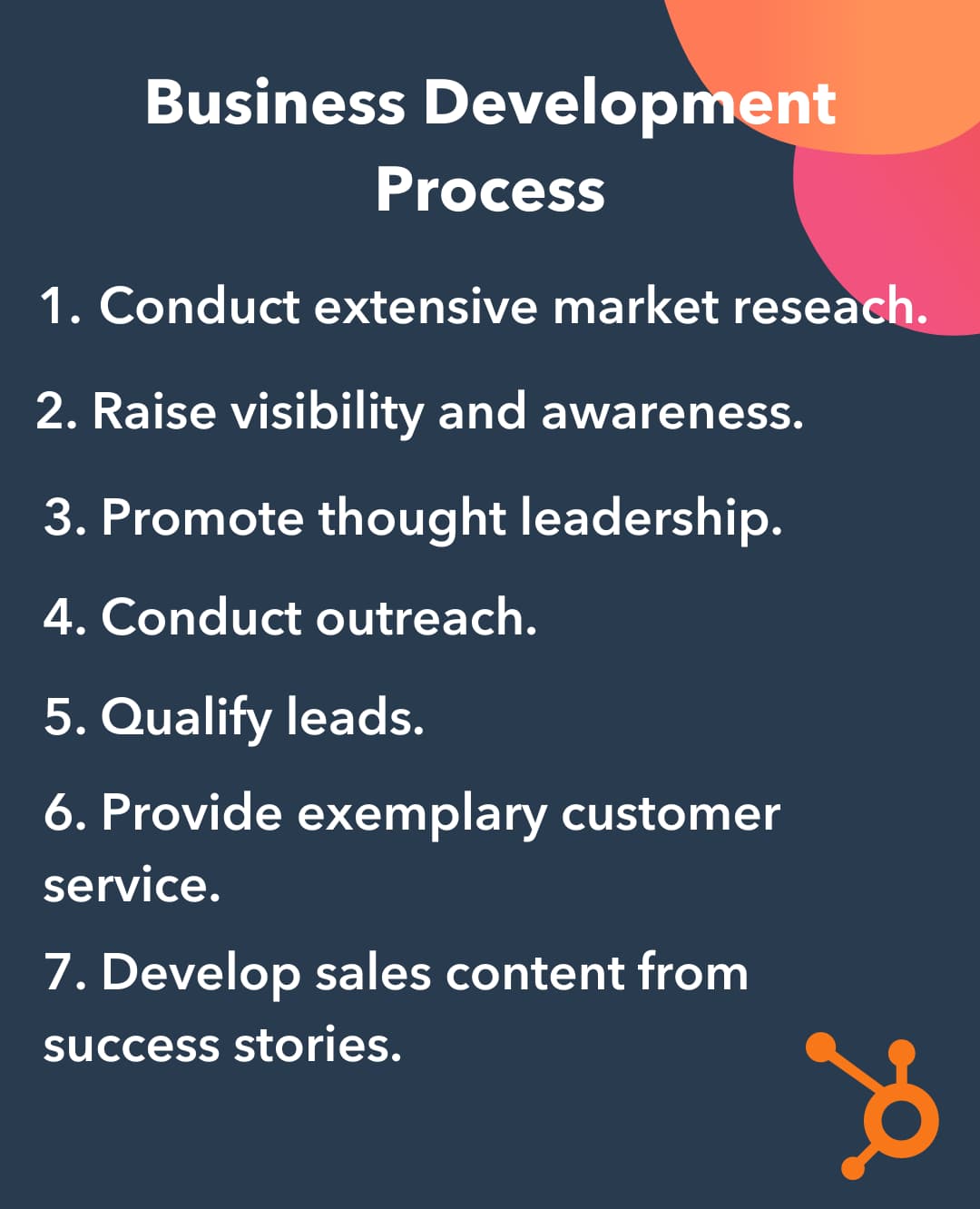
By compiling these elements of business development and sharing them among your team, you create an actionable business development strategy or plan that encourages and promotes success and growth. Let's review the different steps involved in creating your business development plan next.
The purpose of a business development plan (or strategy) is to set realistic goals and targets that allow your reps to grow the business, close more deals, identify prospects, align members of the sales team (and other teams, company-wide), and convert more leads.
1. Craft an elevator pitch.
You can simplify any initial communication with prospects by having an elevator pitch ready to go. This elevator pitch should explain your company’s mission and how your product or service can solve the needs of your target audience. Your elevator pitch should grab the attention of prospects and leads — and get them excited to learn more about what you offer.
Additionally, you can help your team determine which elevator pitches used by both BDRs and reps are most successful in converting leads and then document it in your greater strategy so everyone has access to it.
2. Set SMART goals.
Set SMART goals for your strategy — meaning, make sure your targets are specific, measurable, attainable, relevant, and timely. By creating SMART goals for your business development plan, you’ll be able to ensure these goals are aligned with those of your entire company.
For example, if one of your goals is to increase your number of identified qualified leads this quarter by 5%, make the goal specific by determining the type of prospects you’ll focus on and how you’ll identify them.
Then, decide how you’ll measure your success — perhaps by measuring the number of these prospects who then go on to talk with a sales rep to learn more about the product or service.
You determine this goal is attainable due to the fact you increased your number of qualified leads last quarter by 3%. 5% isn’t too much of a leap.
Your goal is relevant because you know it’ll help your business grow — it pushes you to make a greater impact on your team by contributing to the sales team’s ability to close more deals and boost revenue. Lastly, it’s timely because you’ve set this goal for the quarter.
3. Conduct a SWOT analysis.
As mentioned above, part of any role in business development is to stay up-to-date on market and industry trends and understand your competition. This is where SWOT analysis comes in handy — SWOT stands for strengths, weaknesses, opportunities, and threats. The key to using SWOT analysis correctly is to have a clear goal in mind first.
For example, if your goal is to determine the best way to handle outreach with prospects, you can begin talking to your BDRs, sales reps, sales managers, and current customers about what works best for them.
Next, think about your strengths — what does your business do well? Maybe you have a large support team that provides helpful onboarding for new customers. Or you have several remote reps who can meet face-to-face with prospects in their desired location.
(You might have multiple strengths that make you stand out, so don’t be afraid to list them all and which ones have the greatest impact on your customers.)
Now, think about your weaknesses. Are your product’s limited offerings requiring some leads to consider your competition’s product in addition to yours? Is the need for your product growing faster than your production, or faster than you’re able to establish a large customer support team to assist your customers?
Onto your business opportunities. Think about where you’re going as a business and what you know you can accomplish. For example, maybe your business has recently partnered with another company that can help you boost brand awareness and attract a much broader base of leads and customers.
Lastly, who are your threats? Think about your current competition — who’s producing a product or service like yours and is attracting a similar target audience? Who could become your competition in the future — is there a market gap that another company (new or established) could identify the need for and begin selling?
SWOT analysis allows you to identify the ways your company can create opportunities to grow and expand. It also helps how you establish new processes to address any weaknesses or threats such as identifying more qualified leads, efficiently converting prospects into customers, and shortening the sales cycle.
4. Determine how you’ll measure success.
Depending on the SMART goals you created and the SWOT analysis you performed, you’ll also need to decide how you’re going to measure your business development success.
Here are some examples of common business development KPIs that can help you analyze your efforts:
- Company growth
- Changes in revenue
- Lead conversion rate
- Leads generated per month/ quarter/ predetermined time
- Prospect and customer satisfaction
- Pipeline value
- Reach
5. Set a budget.
Depending on the type of business development goals you set for the team, you may determine you need to set a budget. Consider your resources, the cost of any previous business development strategies you’ve developed, and other important operational line items (what you need, who’s involved, etc.).
Collaborate with the greater team to determine the amount you’re willing to, and need to, spend on business development to get the process started at your company.
6. Always keep your target audience in mind.
Whatever it is you’re working towards, keep your target audience and ideal prospects in mind. Assess their needs and understand exactly how your business and product or service will meet their pain points.
After all, this audience is the group who is most likely to buy your product. Make sure your plan addresses them and their needs so your team can convert more of them and grow your business.
7. Choose an outreach strategy.
As we’ve reviewed above, a major component of business development is finding new prospects and potential customers. To find new prospects, you’ll need to decide how you’ll perform outreach, or connect with these potential customers. Here are some ideas:
- Network
- Use referrals
- Upsell and cross-sell
- Sponsorship and advertisement
Also, review any expectations or guardrails related to outreach reps are held to so your business has only professional and on-brand interactions with prospects.
Congrats! You’ve just completed your business development plan — with your strategy and ideas, your business will be growing in no time.
Business Development Resources

Best for Businesses Interested in a Wide-Reaching, One-Stop Solution
HubSpot Sales Hub includes a suite of resources that enable more focused, effective business development. Features like email templates and email tracking lend themselves to well-targeted, productive prospecting.
Its conversational intelligence capabilities can provide invaluable insight into the "why" behind your BDRs' overall performance — letting you pinpoint the strengths and flaws in key business development elements like your messaging and pain point assessments.
Sales Hub is a dynamic solution that covers a lot of bases for your sales org — including several beyond business development. But that wide range of applications doesn't undermine its utility for BDRs and their managers. If you're looking for a solution that addresses almost every component of successful business development, consider investing in HubSpot Sales Hub.
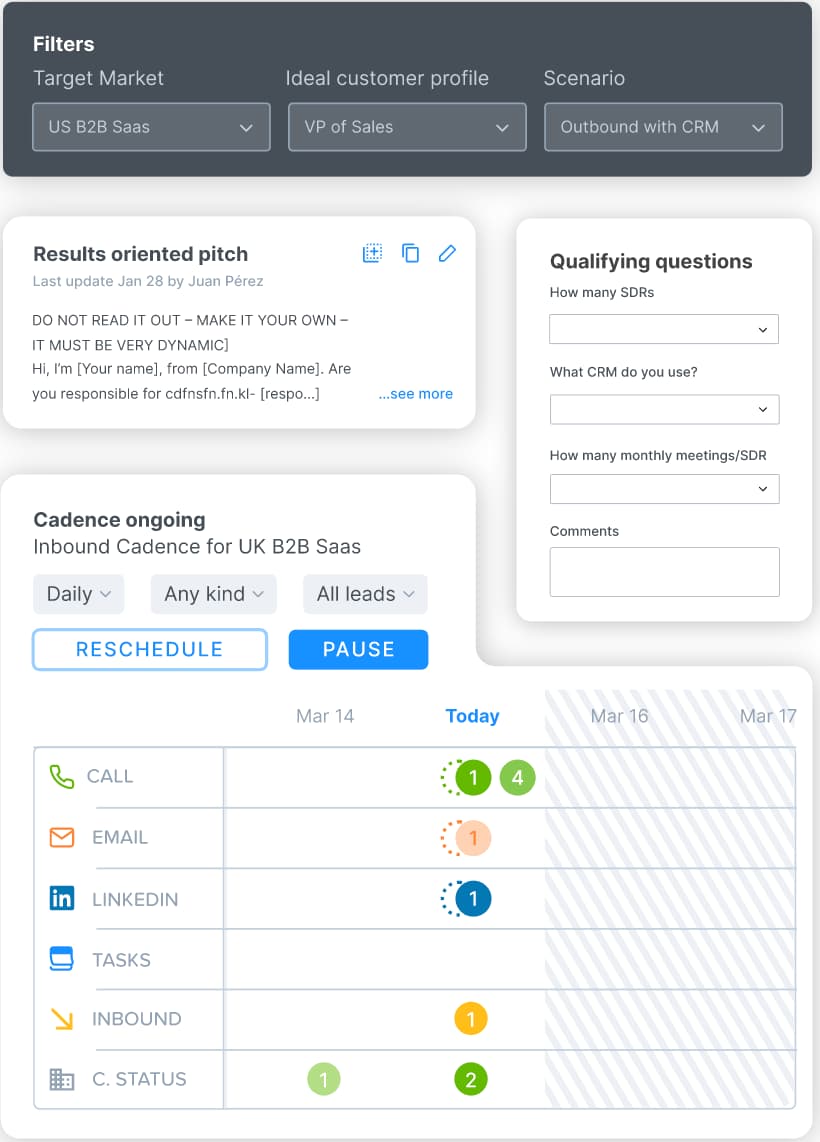
Best for Businesses Interested in Keeping BDRs and Top-of-Funnel Activities on Track
Bloobirds' suite of products includes an end-to-end prospecting platform, tailored to keep BDRs on track and consistently and effectively qualify target accounts. It includes straightforward, accessible task assistance tools for managers to guide reps from task to task without excessive personal coaching.
The software streamlines the administrative side of prospecting by automatically asking reps for relevant insight after calls with user-friendly forms. It also lets you seamlessly fold your sales playbook into your reps' day-to-days with a pre-built data model and easy-to-navigate dashboard.
Bloobirds' suite of products isn't specific to prospecting and other key business development activities, but that doesn't mean it skimps on that particular area. If you're looking for a solution that can set BDRs on the right track and allow for effective top-of-funnel activities.

Best for Businesses Struggling to Generate High-Potential Leads
Leadfeeder is a powerful resource for enhancing a central element of any business development efforts — lead generation The platform helps you identify high-potential leads by automatically analyzing your website traffic.
The software removes ISP traffic to pin down visitors' companies and gauge interest. It also lets you create behavioral and demographic filters for better-informed, more productive lead segmentation.
Successful business development often leans, in large part, on your ability to generate high-quality leads — so if you're interested in effectively sourcing those contacts, you'll need to invest in some sort of lead generation software. Leadfeeder is as good a place as any to start.

Best for Businesses Looking for a Free Way to Source Leads
LinkedIn is one of the most prominent, practical, effective resources for certain key elements of the business development process — namely, prospecting. The value behind leveraging social media for top-of-funnel sales activities isn't exactly some well-kept secret.
Plenty of business development professionals already use channels like LinkedIn to source, screen, and connect with potential leads. Strides like scrolling through skill endorsements, using alumni searches, and engaging with users who have looked at your posts are all excellent ways to find interested prospects and enhance your business development efforts.
Business Development Helps You Grow Better
Business development is a crucial part of any successful company. It’s how you determine the best ways to boost revenue, identify your ideal prospects, generate more leads, and close more deals.
Think about how you can make a strong business development plan and ensure you have the right group of business development reps so you can begin growing your business today.
Editor's note: This post was originally published in July, 2019 and has been updated for comprehensiveness.


 PandaDoc is my pick for the best contract management software, thanks to its many versatility and ease of use.
PandaDoc is my pick for the best contract management software, thanks to its many versatility and ease of use.  You may know DocuSign as one of the leaders for electronic signatures with over fourteen million users worldwide.
You may know DocuSign as one of the leaders for electronic signatures with over fourteen million users worldwide.![]() Agiloft is an all-in-one enterprise contract management solution and comes with multiple features, including:
Agiloft is an all-in-one enterprise contract management solution and comes with multiple features, including: Like Agiloft, Coupa Contract Lifecycle Management comes with a bevy of customizable features. They include contract authoring, contract templates, audit logs, and advanced search and categorization. Besides, other features include workflow automation, analytics and reports, and both native electronic signatures and a DocuSign integration.
Like Agiloft, Coupa Contract Lifecycle Management comes with a bevy of customizable features. They include contract authoring, contract templates, audit logs, and advanced search and categorization. Besides, other features include workflow automation, analytics and reports, and both native electronic signatures and a DocuSign integration. Contract Safe is yet another great contract management tool for businesses of sizes looking to eliminate folders and shared drives for contracts and instead use cloud-based software that’s certified and encrypted to keep your data completely secure.
Contract Safe is yet another great contract management tool for businesses of sizes looking to eliminate folders and shared drives for contracts and instead use cloud-based software that’s certified and encrypted to keep your data completely secure.  Conga Contracts truly recognizes that contracts were meant to evolve past the 90s with their intelligent contracts solution that simplify the entire contracting and reporting process. In fact, this contract management software includes essential features such as:
Conga Contracts truly recognizes that contracts were meant to evolve past the 90s with their intelligent contracts solution that simplify the entire contracting and reporting process. In fact, this contract management software includes essential features such as: LinkSquares isn’t your typical contract management software. Instead, LinkSquares is a truly innovative AI-Powered Contract Analytics Cloud. Certainly, it uses advanced technology to analyze text from contracts to identify key data, content, and liabilities and is perfect for in-house legal and financial teams.
LinkSquares isn’t your typical contract management software. Instead, LinkSquares is a truly innovative AI-Powered Contract Analytics Cloud. Certainly, it uses advanced technology to analyze text from contracts to identify key data, content, and liabilities and is perfect for in-house legal and financial teams. 

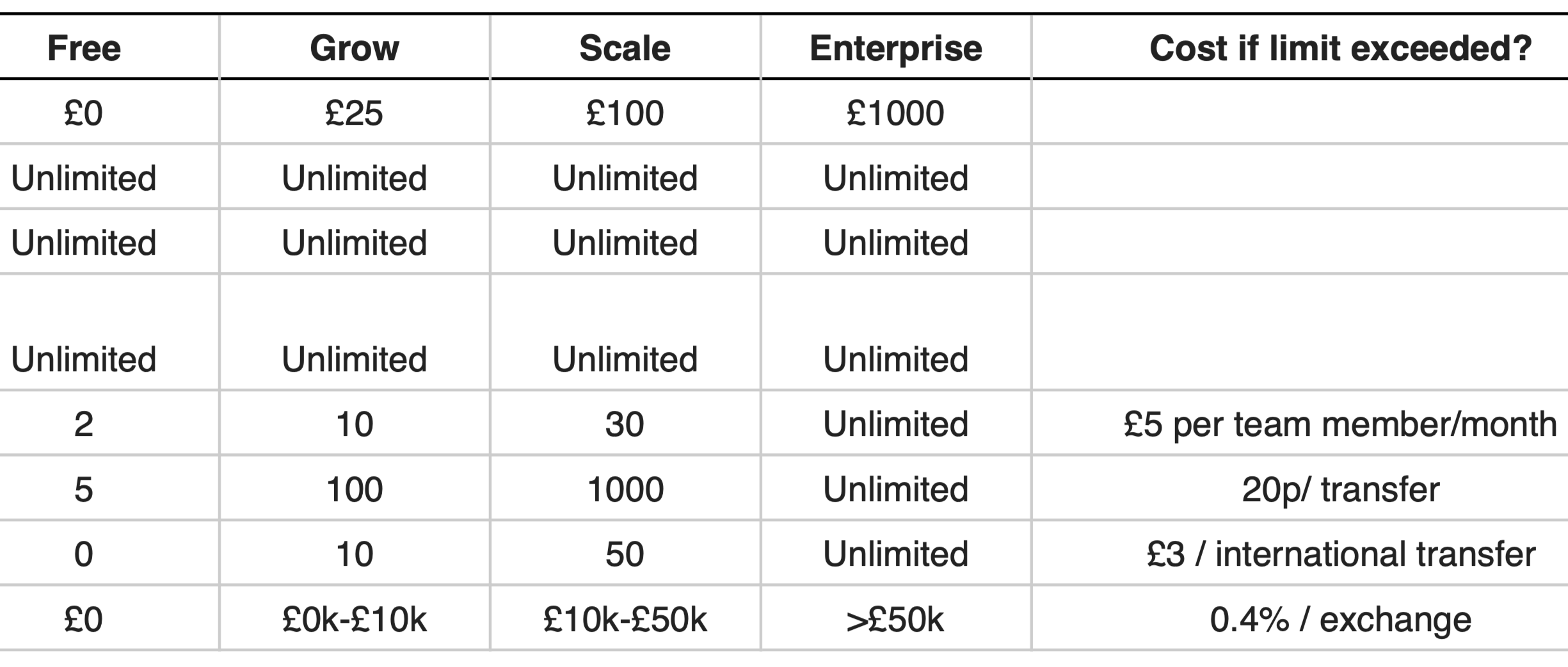



















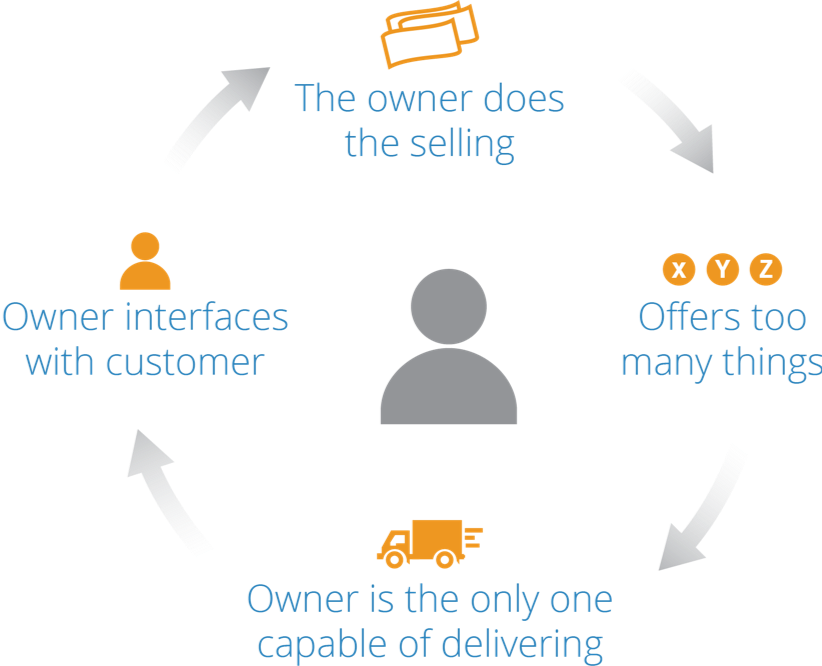
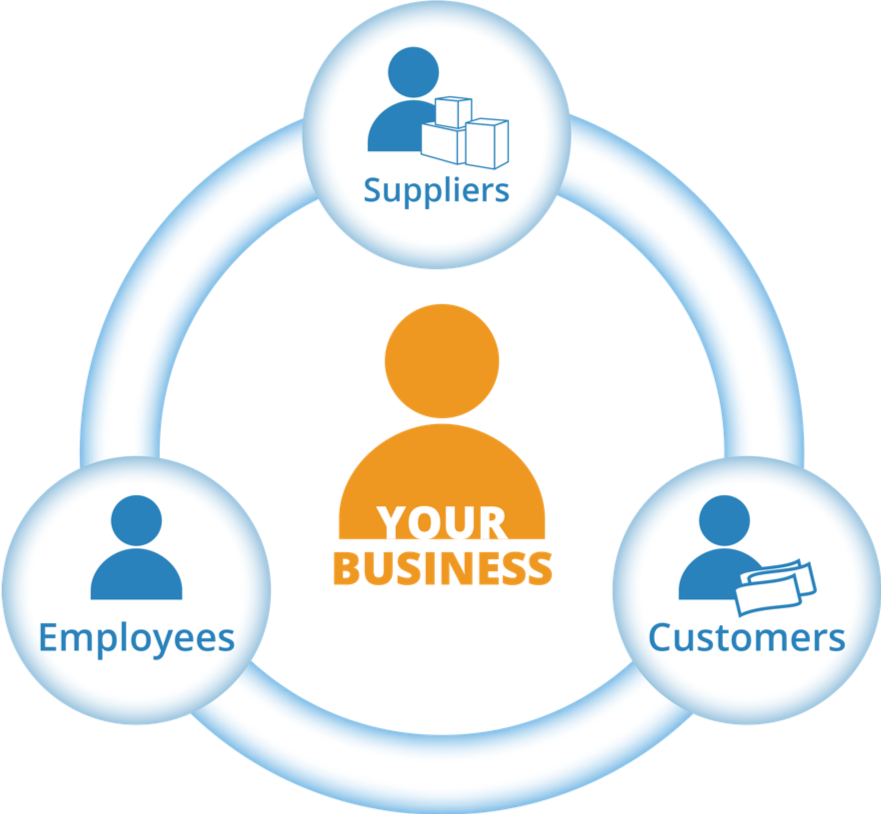











 According to many market analysts, the market for CRM solutions shows no signs of slowing down. It’s increasingly rare to find established sales organisations of any significant size without some form of CRM solution.
According to many market analysts, the market for CRM solutions shows no signs of slowing down. It’s increasingly rare to find established sales organisations of any significant size without some form of CRM solution.






